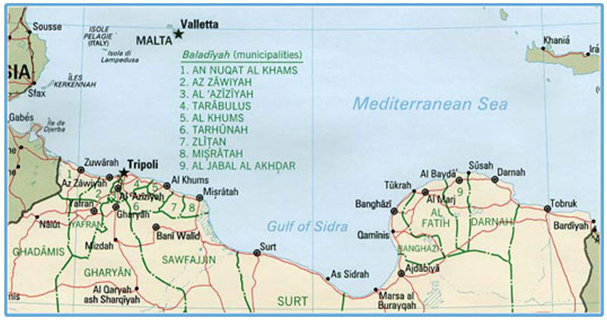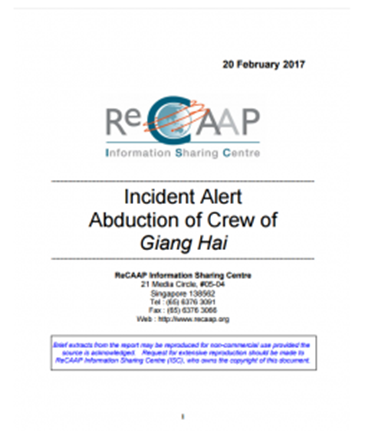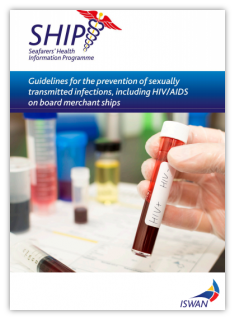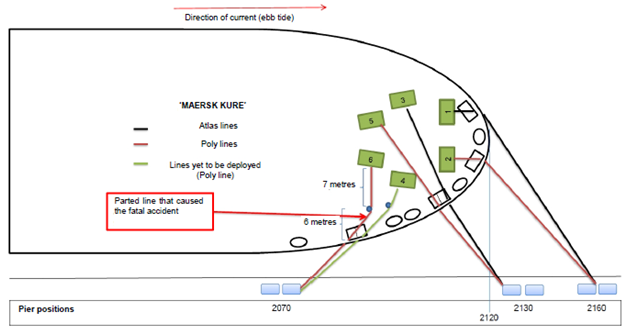The Shipowners P&I Club has identified some routine shipboard tasks which have given rise to avoidable claims and, on the basis
of these, will be publishing monthly sample risk assessments to advise Members on how to mitigate such claims. While the Club
acknowledges that many Members already have a formal risk assessment process in place these examples, which are provided
for guidance purposes only, will be of benefit to those who may not have the shore side management infrastructure in place and
therefore may not have access to such procedures. The Club emphasizes that this guidance is not to undermine or replace the
company’s safety management policies or any applicable statutory regulations.
What is a risk assessment?
When should a risk assessment take place?
What is risk?
How can you measure likelihood, severity and consequence?
Applying control measures to reduce the risk
Monitoring the effectiveness of the controls
Answered in details.
Lessons learned from metal wire rope failure
Metal wire ropes are widely used in winching, towing or hoist (lifting) systems, such as cranes and form a fundamental and
essential part of those systems.

What is a metal wire rope?
Why do they fail?
What can be done to minimize the risk of failure?
What can be learned from a failure?
Answered in details by SKULD P&I Club.
North P&I Club publishes warning for Libyan ports
North P&I Club has issued a port situation and safe navigation warning on the status of Libyan ports, including the
following information received from their local P&I correspondents.

Open Ports: Mellitah, Zawia,
Tripoli, Misurata, Marsa El Brega, Tobruk, Al Khoms, Marsa El Hariga, Farwah,
Bouri,
Es Sider, Ras Lanuf, Zuetina.
Closed
Ports: Benghazi, Derna, Sirte
Details
publication provided by The North of England P&I Club
One dead after pirates attack onboard Giang Hai vessel
Pirates killed one and abducted six sailors of a a Vietnamregistered ship, Giang Hai in an attack off the southern
Philippines on February 19, ReCAAP ISC reports in an incident alert.

In particular, the ReCAAP ISC announced that on 20 Feb 17 it received report from the Focal Point (Vietnam)
about an abduction incident occurred on the ship.
Detailed publication released by ReCaap Information Center.
Few months left for ECDIS updates
IHO has revised its ENCs standards for ECDIS, therefore, all ECDIS systems used on board a vessel are required
to receive updated functions before 31 August 2017. In case the software renewal is not applicable so as the
system to be compatible with the latest IHO standards, the ECDIS itself should be replaced before the deadline.
ClassNK has issued Technical Information notice to warn on this requirement. The following table includes details
regarding the revision of IHO standards:
|
Standards
|
Current
|
Revised
|
|
Specifications for Chart content and display
aspects of ECDIS
|
S-52 Ed.6.0
|
S-52 Ed.6.1.0
|
|
Presentation Library (PL)
|
Ed.3.4
|
Ed.4.0
|
|
Test Data Sets
|
S-64 Ed.2.0.0
|
S-64 Ed.3.0
|
Summary of updated functions as is follows;
Modification to drawing method for chart symbols
Addition of new symbols and modification of categories of some symbols
Modification to alarms and warnings for chart symbols.
Some models of ECDIS are to be renewed or required to replace circuit board(s) in case where ECDIS cannot
install new software, which is compatible to the above new standards. Please confirm with ECDIS manufacturers
for details.
Confirmation survey is required as mentioned below.
In case of renewal or replacement of circuit board(s) before 31 August 2017, to be confirmed at the timing of
the renewal/replacement.
In case of the software update before 31 August 2017, to be confirmed by the first SE survey after update.
Information notice published by Class NK on February 2017.
Cell phones: A hazard to navigation?
The UK NTSB recently investigated an accident involving a bulk carrier and towing vessels on the Mississippi was
contributed to by the crew being distracted by using their mobile phones. The accident resulted in claim of US$60
million.

Therefore the MAIB recommended that the routine of restricting mobile phone use in pilotage and restricted
waters was introduced. The Maritime and Coastguard Agency (MCA) responded to the MAIB report by
recommending the use of RED ZONES aboard vessels.
What is Red Zone?
All details polished by Maritime Coast Guard Agency is accessible.
How to be protected against HIV when
onboard
For
seafarers, the likelihood of contracting an Sexually transmitted infections
(STIs) is increased, due to their
unsettled lifestyles and a lack of access to
necessary precautions. The Shipowners P&I Club in partnership
with ISWAN
has isued guidance which dispels some of the common misconceptions about
sexually
transmitted infections and provides seafarers’ with advice.

The International Transport Workers’ Federation (ITF) Maritime Affiliates recently carried out an extensive survey
concerning the sexual health and wellbeing of 608 seafarers across 30 different countries. The results identified
a distinct gap in knowledge with regards to safe sex and the transmission of STIs.
Details published by International Seafarers Welfare and Assistance Network is online.
Mooring line parted suddenly and struck
seaman

Bundesstelle
fur Seeunfalluntersuchung (BSU) has issued safety investigation report on an
occupational
accident with fatal consequences happened on board the Greek-flagged
CMV MAERSK KURE, sailing from
Rotterdam. The ship’s
command was advised by a pilot from 0140 LT onwards. To assist in the berthing
manoeuvre, one tag was made fast fore and another aft. After the fore and aft
springs and two head lines
were each put ashore, the tugs were cast off. After
that, the second spring was to be put ashore at the bow.
A seaman had already
attached the heaving line to the eye of the second spring and begun to pay out
the line through a fairlead on the starboard side. To this end, he had to stand
right next to the deployed spring.
This
line parted suddenly and struck the seaman such that he collapsed immediately. The crew members present
pulled
him out of the danger area of the lines, advised the bridge, and then attempted
to resuscitate him. The
casualty was later carried down the gangway to the pier
on one of the ship’s stretchers, where the crew of
the requested ambulance took
charge of the subsequent medical care. Despite all efforts, the seaman
passed away
en route to the hospital.
Factual
information, Course of the accident and investigation, Analysis, Conclusions
and Safety Recommendations
by Federal Bureau of Maritime Casualty Investigation
is accessible online.
Crew
member gets injured while letting go the towline

Transport Malta has issued investigation report regarding a serious injury incident that happened onboard the vessel.
Vessel arrived at Amsterdam on 05 February 2016 to discharge 12,600 tons of sunflower seed. A Dutch pilot, assisted
by two harbour tugs, conducted the navigation of the vessel into Vlothaven. The master relayed the instructions to the
second mate who was in charge of the aft mooring station. The other crew members manning the aft station were a
fitter, a motorman and two able seamen (AB). All crew members were wearing their protective clothing, including safety
helmet, safety shoes and gloves. The pull on the towline was unforeseen and sudden. The left hand of AB 2 was drawn
with the towline and trapped against the bitt. At the time of the accident, the fitter was on the winch control panel and
the motorman was handling the stern line.
Course of events, Medical Response and injuries, Industry recommendations, Mooring procedure and risk assessment
with Safety actions taken during the course of the safety investigation are mentioned in the official publication by Transport
Malta is available.
Singhai Training department recapped the topics above that published in February related with Maritime Safety. All
documents are available on the source as well as on STAS linked to http://training.singhai.com.sg/

